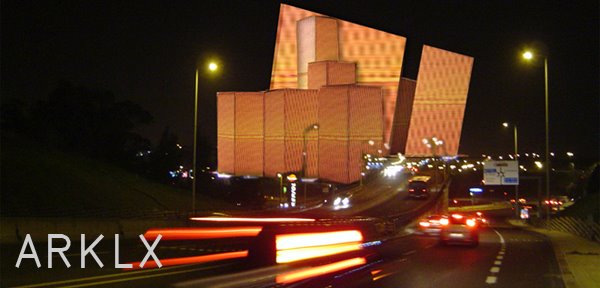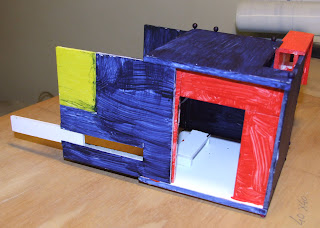ÁGUA UNIVERSAL - http://www.agua-universal.pt
|
É um site recente do arquitecto Pedro Formozinho Sanchez e do designer gráfico Filipe Sousa. Alerta para a escassez deste recurso e para o perigo da sua privatização para comercialização como qualquer outro bem transacionável. Só 1 a 3% da água do planeta é potável e com tendência para diminuir. Não pelo aumento da população mundial, mas sim à disrupção do Ciclo da Água por mudanças climáticas e contaminação.
A new site by arch. Pedro Formozinho Sanchez and graphic designer Filipe Sousa. Refers to the scarcity of water and the danger of turning into a commodity. Only 1 to 3% of the world’s water is drinkable and it tends to be even less. Not due to world population growth, but fue to the disruption of the Cycle of the water. Either by climatic changes or contamination.
|
|
De imediato ocorre poupar, mas isso
não chega. Mais que a poupança, há que agir sobre as causas da destruição deste
recurso.
Arquitectos, urbanistas e todos
os que agem sobre o Território têm de reflectir e dar o seu contributo profissional.
Consideraria 3 níveis de intervenção:
1. Repensar como se projecta em
Arquitectura e Urbanismo, da prática de atelier ao Ensino.
A água pluvial não pode ser desperdiçada,
há que ser recolhida pelas coberturas e canalizada num circuito independente para
reservatórios, aproveitando-a para regas de espaços verdes e limpeza das ruas,
em vez de engrossar o caudal dos esgotos.
Banalizar o uso das coberturas ajardinadas nos
climas que o permitem. As plantas fixam as partículas em suspensão da poluição
atmosférica; o excedente da água é drenada para os reservatórios acima
mencionados.
One immediately thinks of sparing, but that is
not enough. More than sparing, there’s a nerend to act upon the causes of the
destruction of this resource.
Architects, Urbanists and those acting on the
Territory must have a deep reflection and give their professional contribution.
I would consider three levels of intervention:
1. Rethink how to design and plan in Architecture
and Urbanism, from the studio practice to the teaching in Universities.
Rainwater cannot be wasted; must be collected
on the roofs and through a separate drainage system, stored for watering parks
and gardens and washing the streets. The present solution of directing
rainwater to the sewage system is senseless.
To implement the use of roof gardens where
climate permits. The plants capture the particles in the polluted air; the
remaining water would be direct to the above mentioned reservoirs.
New York roof gardens - What if...
Urban forest, Chongqing, China – MAD architects – project
under development
Green walls - Ivey
Dar mais ênfase à requalificação
urbana, renovando, actualizando ou mudando as funcionalidades do existente.
Retomar a antiga prática das
hortas e quintas nos interstícios da cidade. Evitariam a excessiva impermeabilização
dos solos, constituiriam pulmões da cidade, ajudariam a evitar o aquecimento
excessivo dos centros urbanos e seriam um excelente contributo para tornar mais
eficaz e racional o sistema de abastecimentos das cidades.
To emphasize urban requalification, building
renovation, either updating conveniences or changing functions.
To restore the old practice of vegetable
gardens and farms inside towns. It would counter the excessive waterproofing of
urban soils; it would be the lungs of the towns. It would help to balance the
overheating of the cities and finally it would be an excellent contribution for
the efficiency of supplying the towns with fresh goods.
Mapas de Filipe Folque, 1856 zona
do Príncipe Real , Lisboa
Para consultar uma montagem de
todas as cartas
Lisbon mapping by Filipe Folque, 1856, area of Príncipe Real (the trapezoidal ligth green form), Lisbon
To see a collage of all maps visit link above
Same are today. The existing green spots are garens and parks already existing in 1856, but the vegetable gardens are gone and the town became more compact.
2. A boa gestão do Território e
como o usamos é o nível seguinte de intervenção, com uma componente
técnico-jurídica e outra política.
A política de ocupação do
Território tem de ser ditada por interesses estratégicos de desenvolvimento
sustentável, não por interesses do mercado imobiliário. Não é sustentável a
presente situação em que privatizam os lucros e estatizam os custos da expansão
urbana sem sentido.
Responsabilizar criminalmente a
prática de licenciamentos em cima de linhas de água e suas bacias.
2. A good management of the Territory and how we
use it would be the second level, with technical and juridical component and
the other one political.
The policy of occupying the territory must be
dictated by strategic interest based on sustainability, not by the real estate
market. It is unbearable and unsustainable the present situation where profits
go the private sector and costs to public (state) responsibility.
Cheias na Madeira. As linhas de
água foram estreitando até que um dia…
Flood in madeira island. The watercourses have been narrowed until one day...
To requalify and respect the watercourses. Stop
with the absurd of piping watercourses, turning them into sewage. To understand
the watercourses as a wealth to explore wisely. A river is more than just
water. It is fauna and flora; it is a regulator of the cycle rain/draught. It
is Landscape. It is Heritage.
Rio Estorãos, Vale do Lima- Viana
do Castelo / Portugal
Estorãos river in Lima valley, Viana do Castelo, North of Portugal
Rio Gilão/ Tavira-Algarve/Portugal.
Simples manutenção e os
resultados fantásticos que se obtém.
Gilão River trough Tavira in Algarve, Portugal. A simple maintenance and fantastic results
Uma gestão florestal que combata
a erosão dos solos consolide encostas, permita a infiltração da água para os
aquíferos.
A forest management to prevent erosion; consolidate hills; to allow the water to replenish aquifers
3. O terceiro nível talvez seja
“desconstruir” o mito da solução Hi-Tec por tudo e por nada e o conceito de
mega-projectos. Dar mais ênfase ao engenho humano que a implementar sistemas de
relação custo/benefício duvidosos. Aarquitectura bioclimática é um bom exemplo
do que se consegue fazer com Low-Tec combinada com a quantidade ajustada de
Hi-Tec.
O conceito “off-the grid” tem algo de cultura
underground, mas contém o gérmen de uma esperança num futuro mais inteligente:
fazer o downsizing das nossas estruturas, descentralizá-las, enfim,
democratizar o Progresso. Colocar a ciência e a tecnologia ao nosso serviço,
não um mero fim, como por vezes parece.
3. The third level maybe it would be to “deconstruct”
the myth of the Hi-tec for everything and the concept of mega-projects. It
should be more worthy to emphasize the human ingenuity rather than implement
solutions of doubtful cost/benefit. Bioclimatic architecture is a good example
on how to combine Low-Tec with the adjusted amount of Hi-Tec.
The “off-the-grid” concept has something of
underground Culture, but it contains the seeds of hope in a better future:
downsizing the infrastructures, decentralise them, in brief, to democratize
Progress. To place Science and Technology at our service as tools, not as an
objectives in itself, as sometimes it seems.





















































